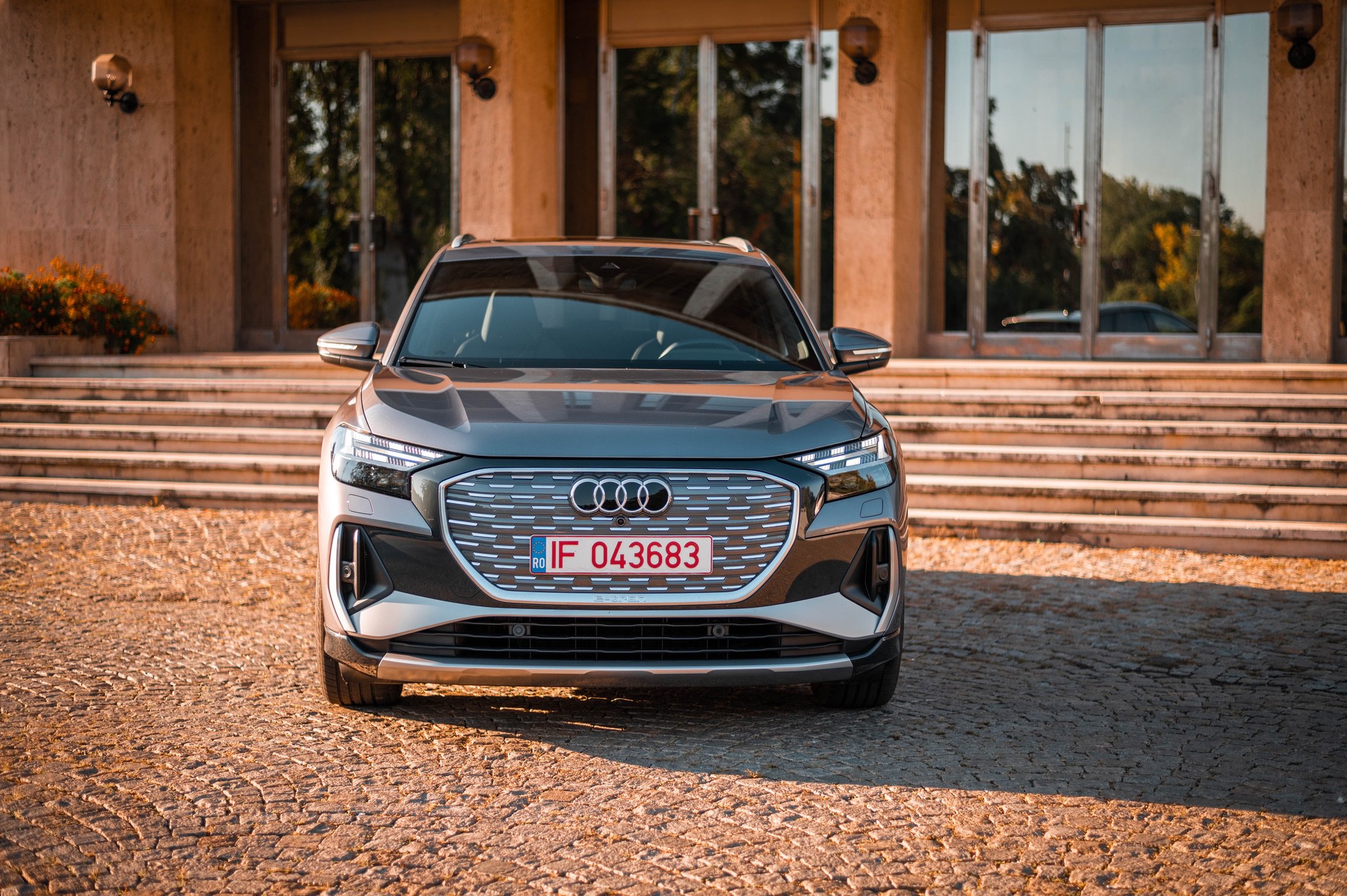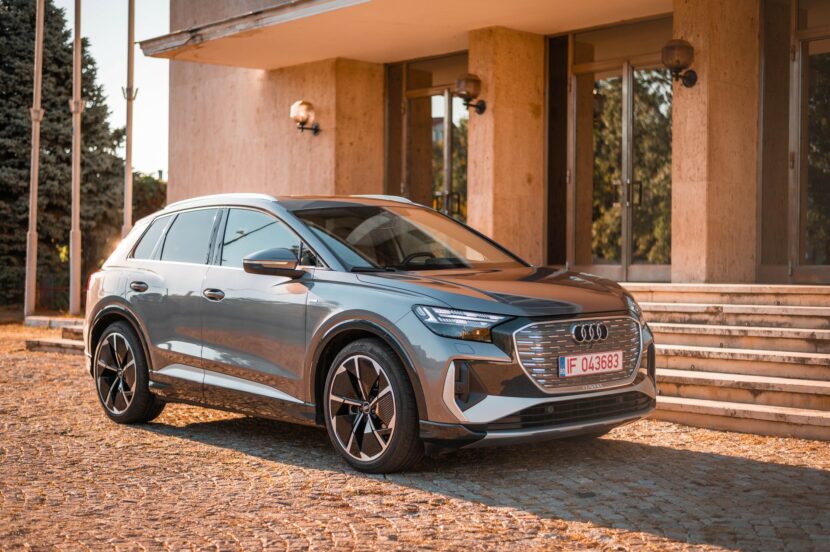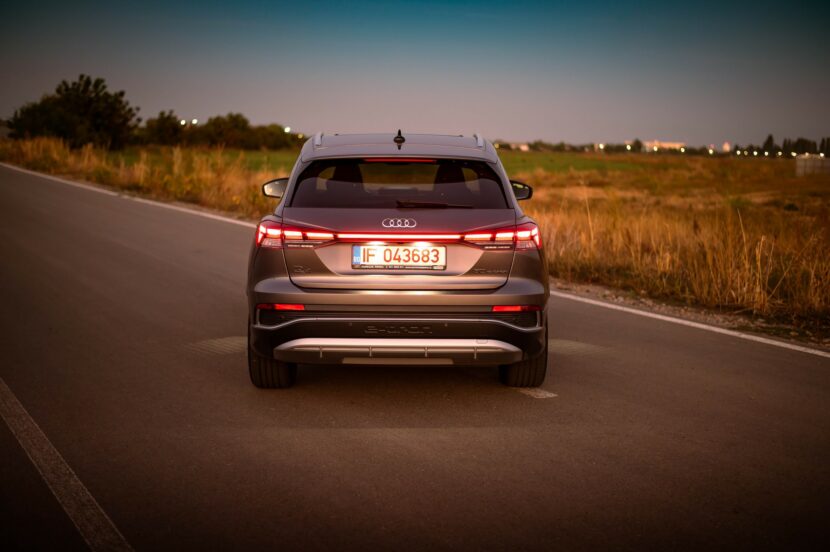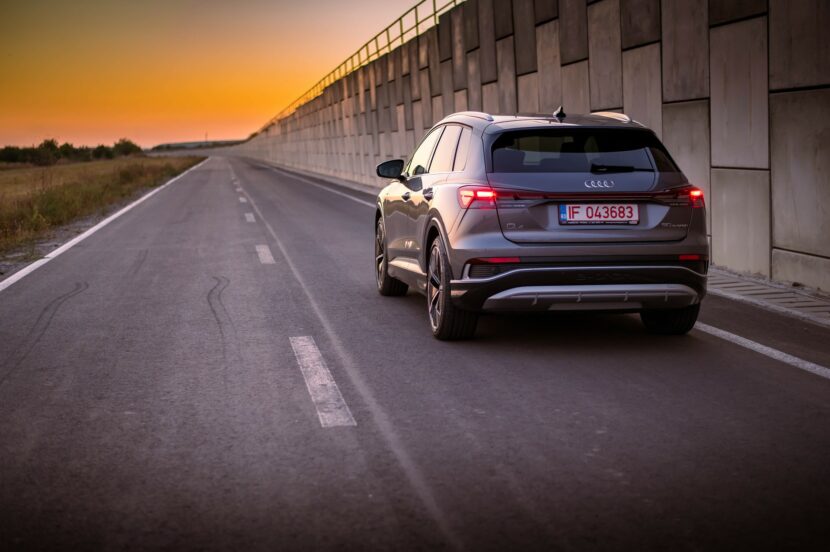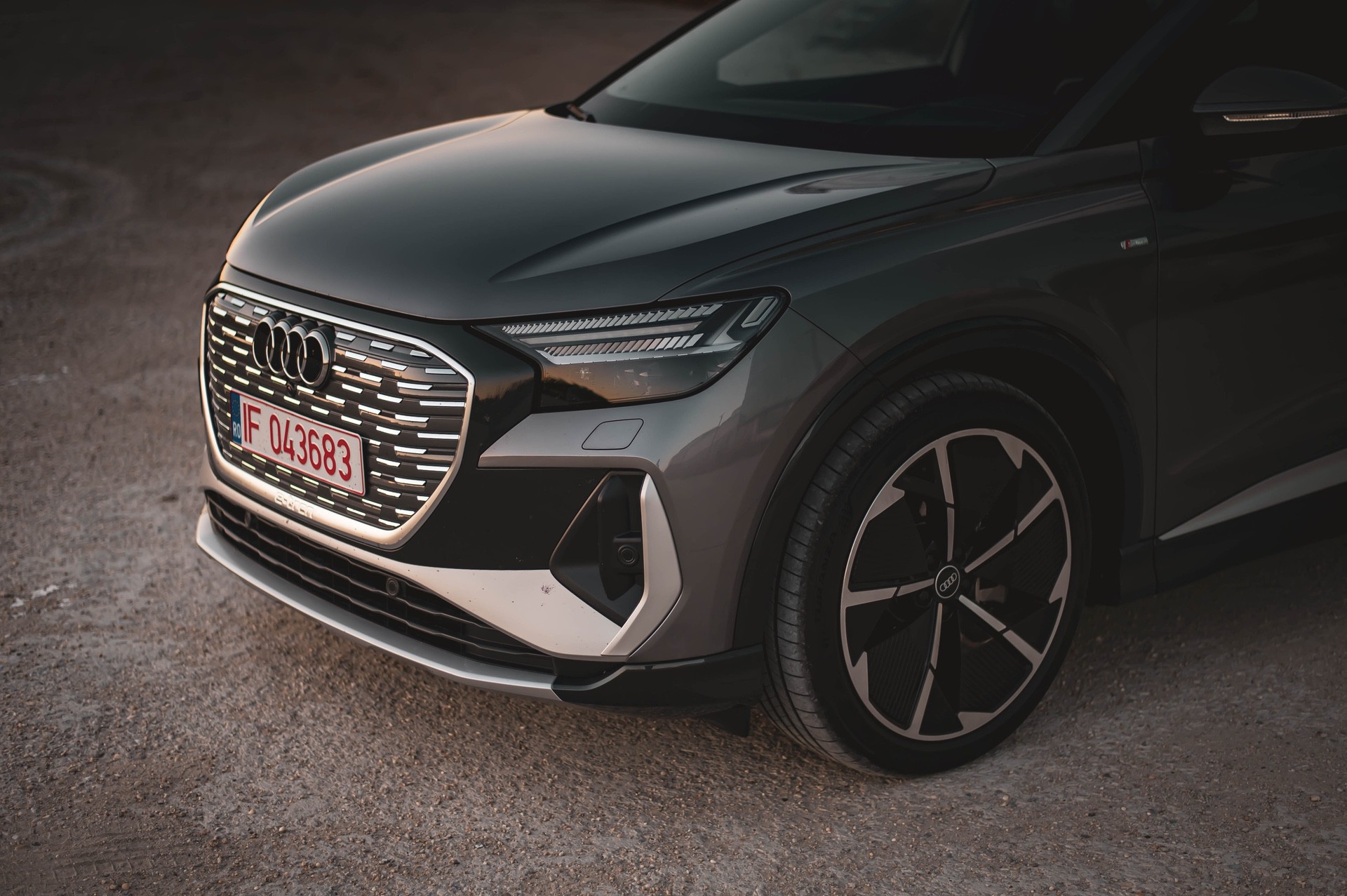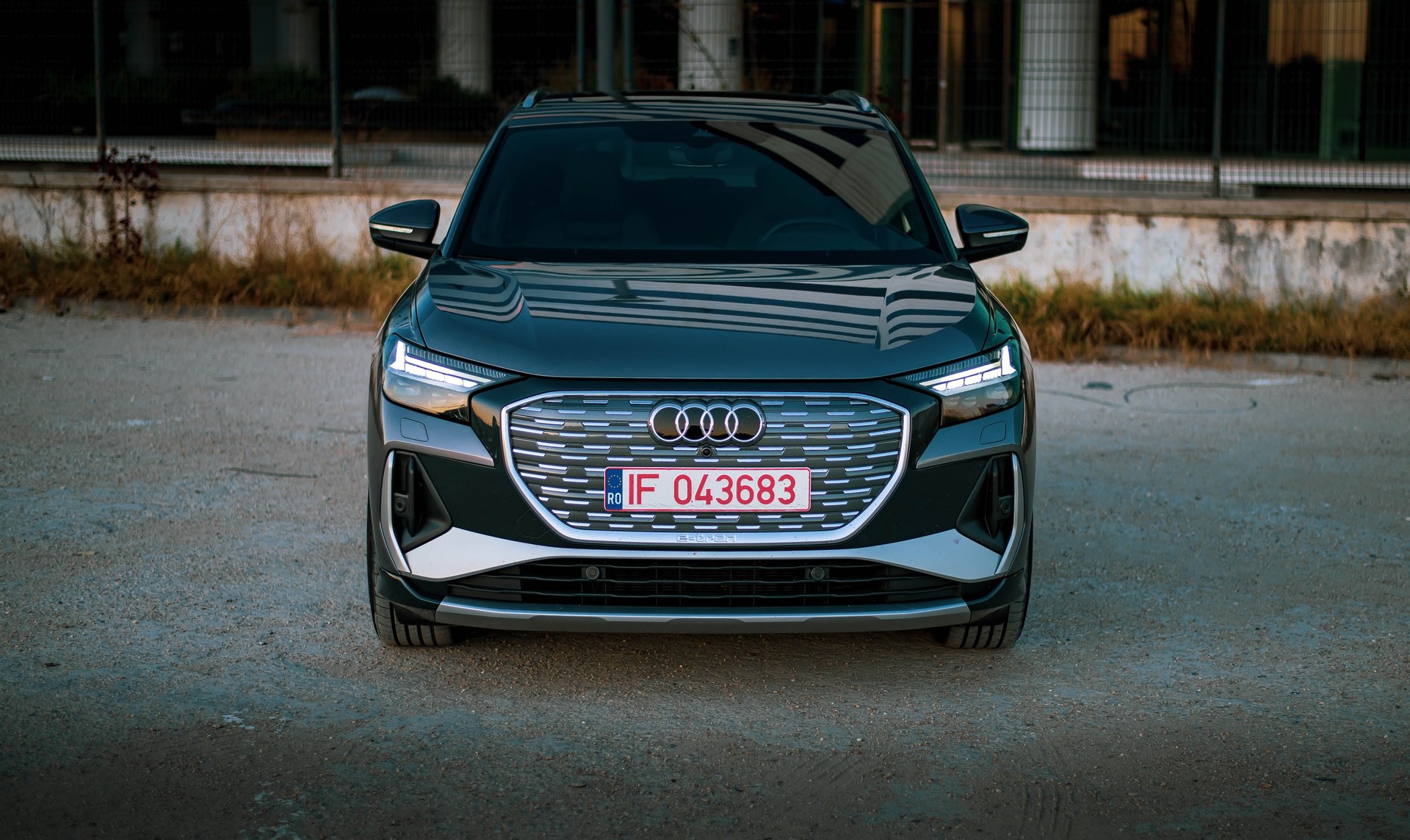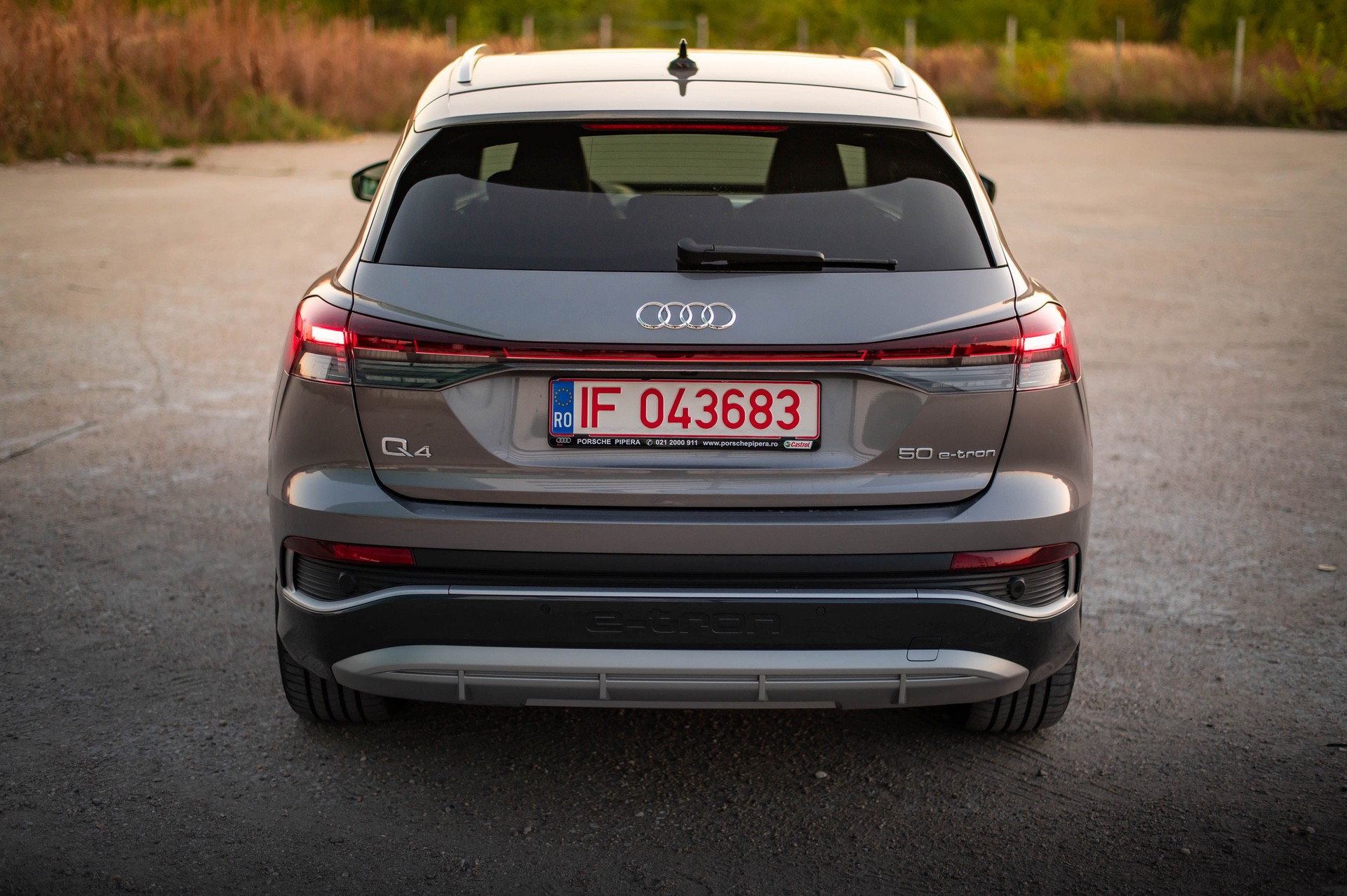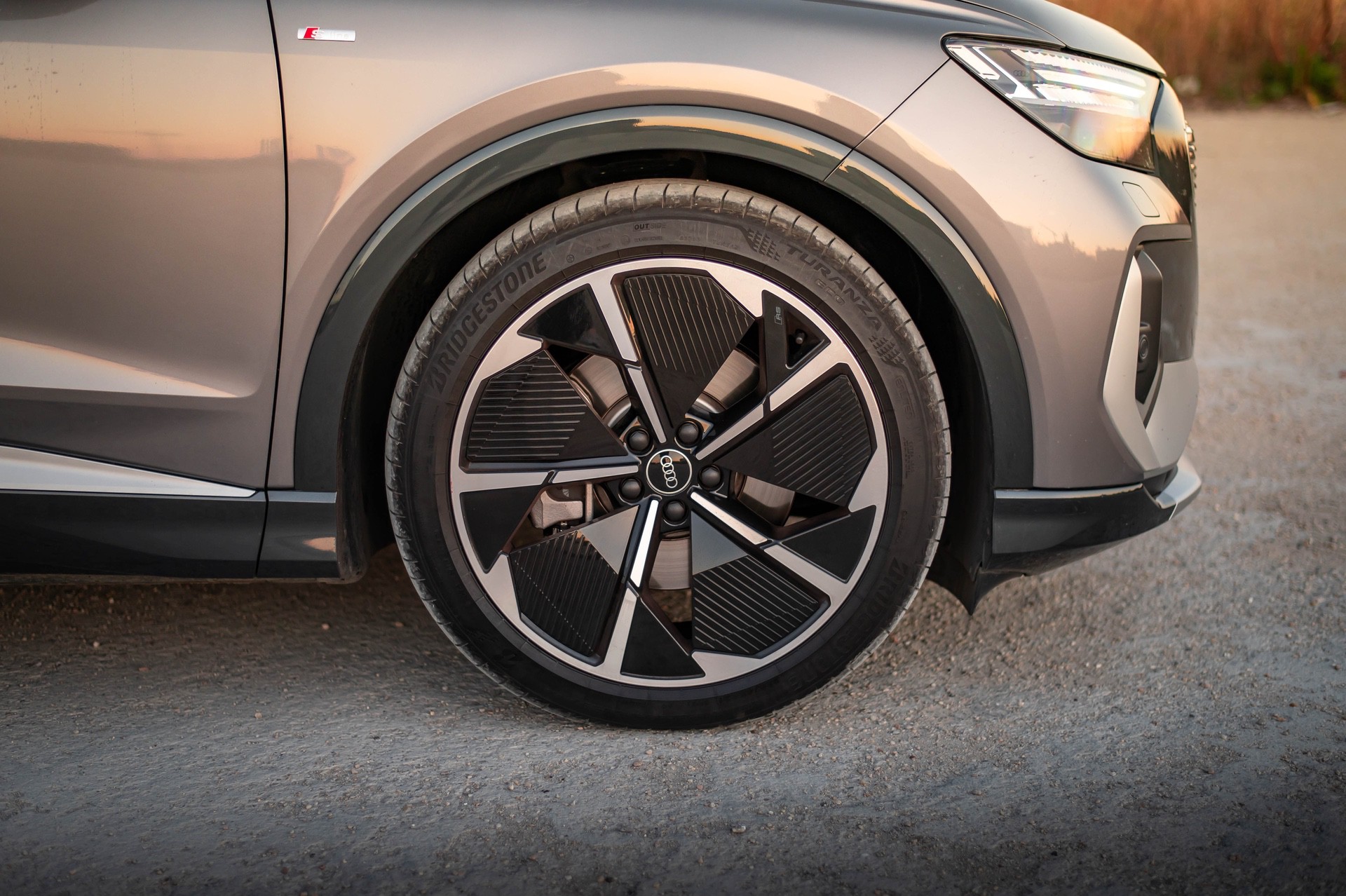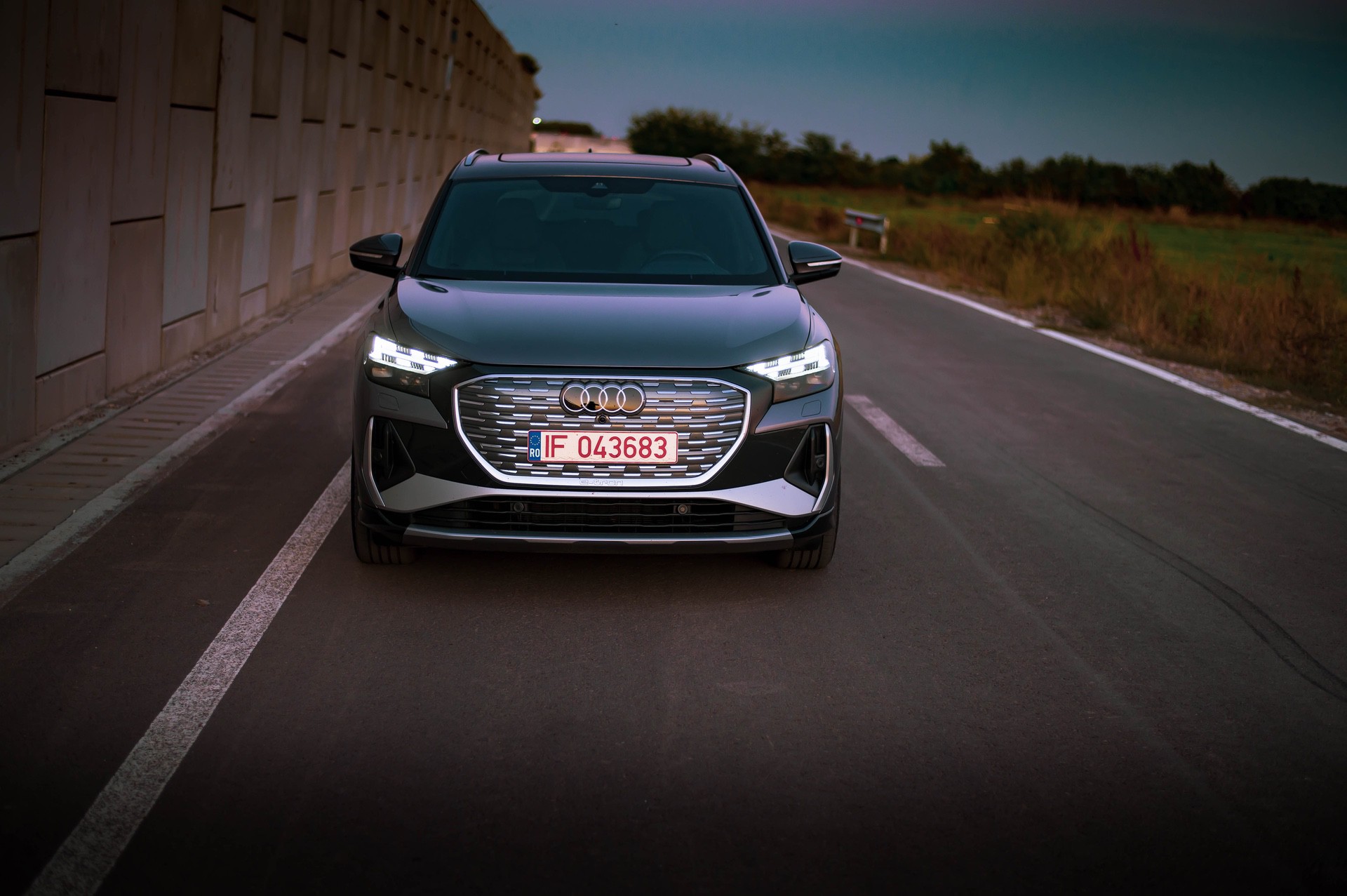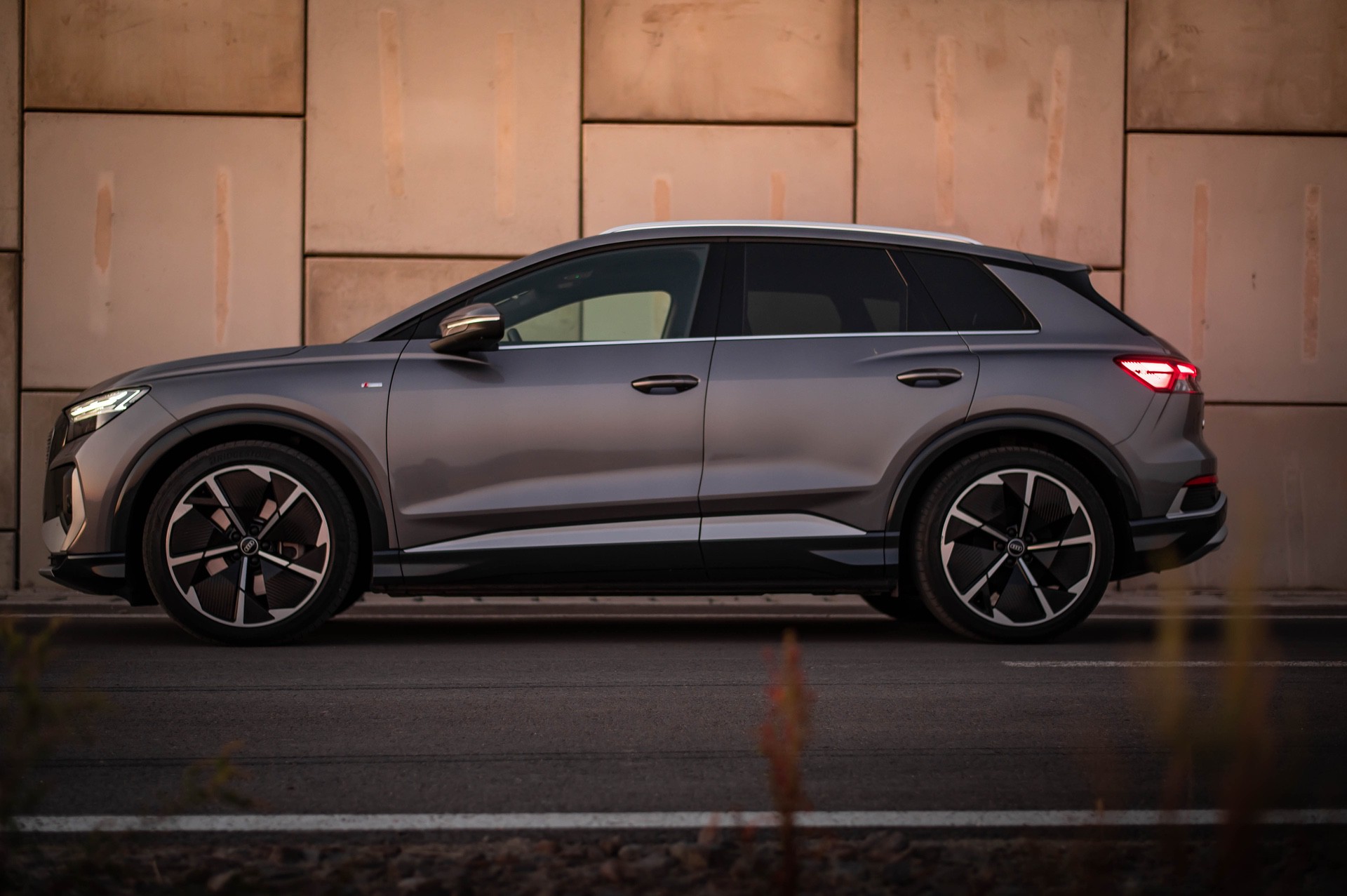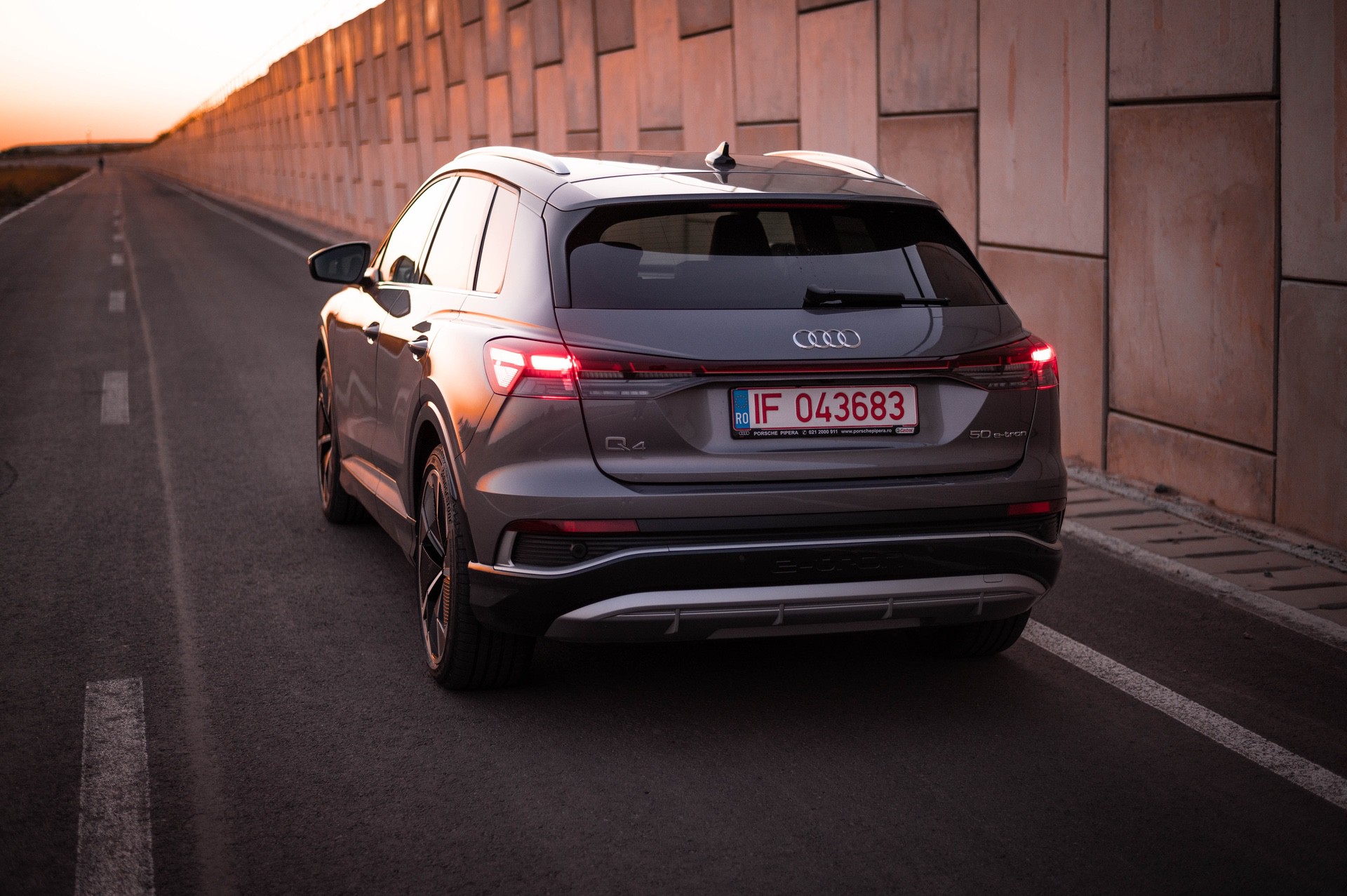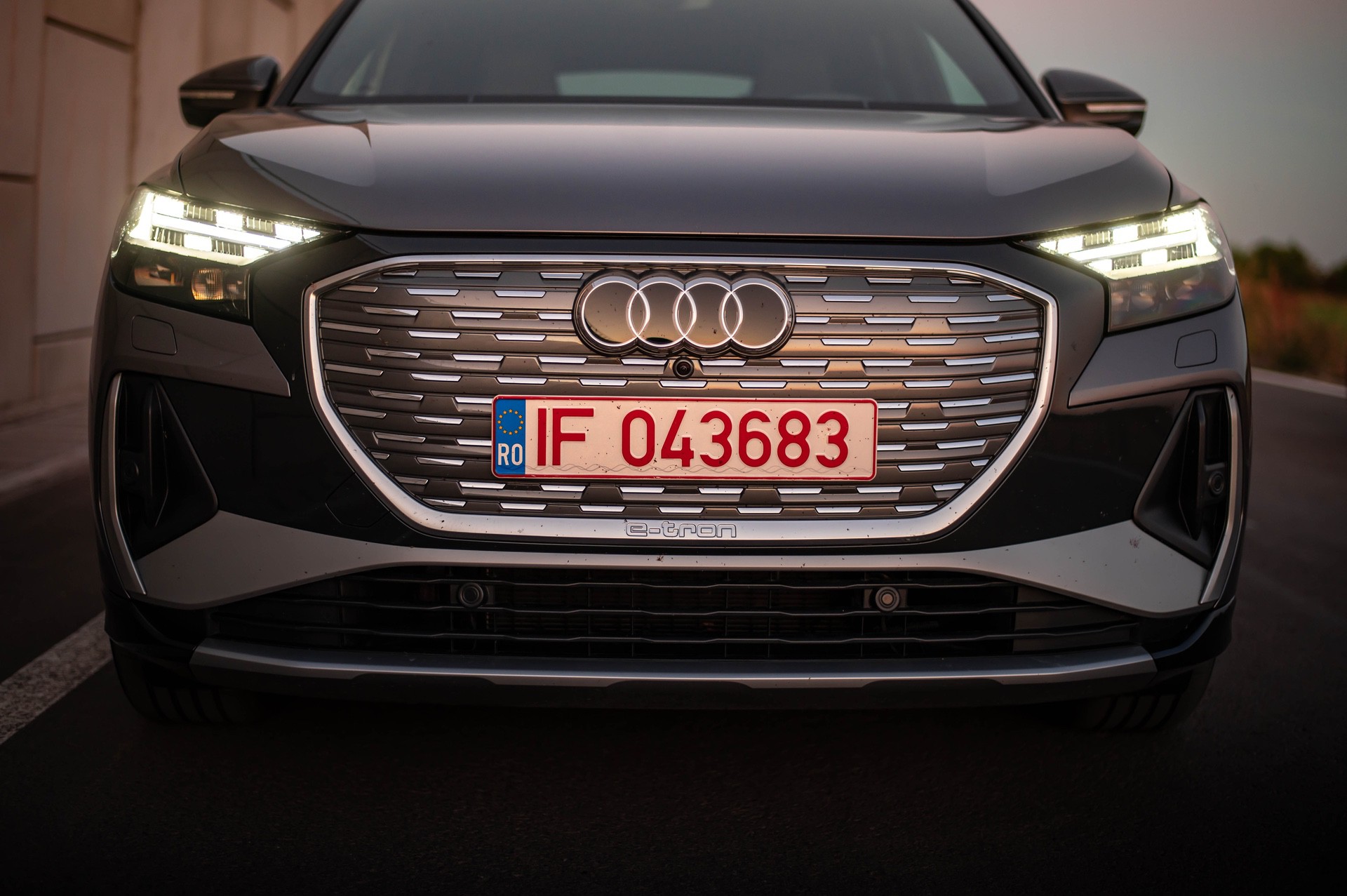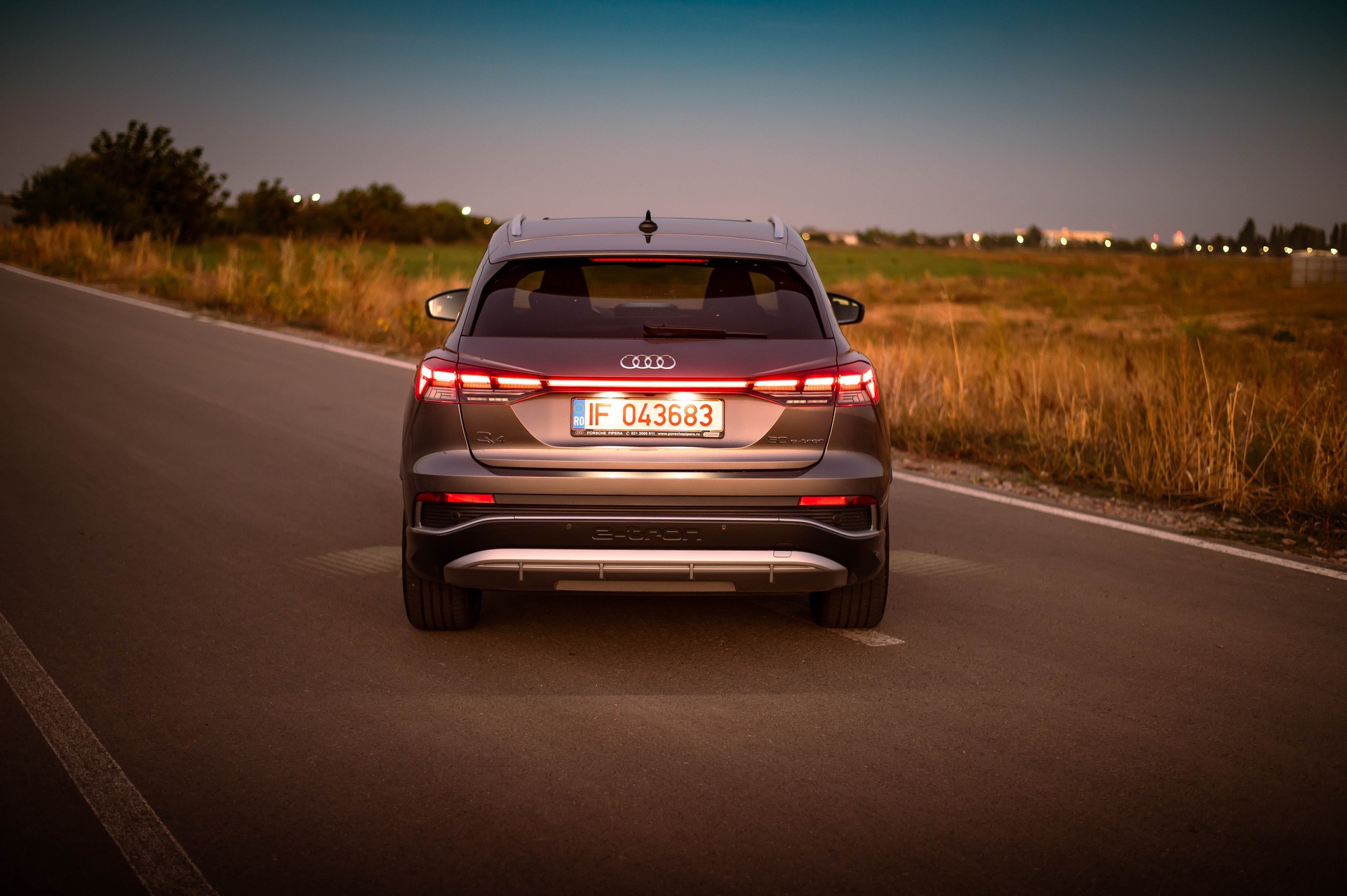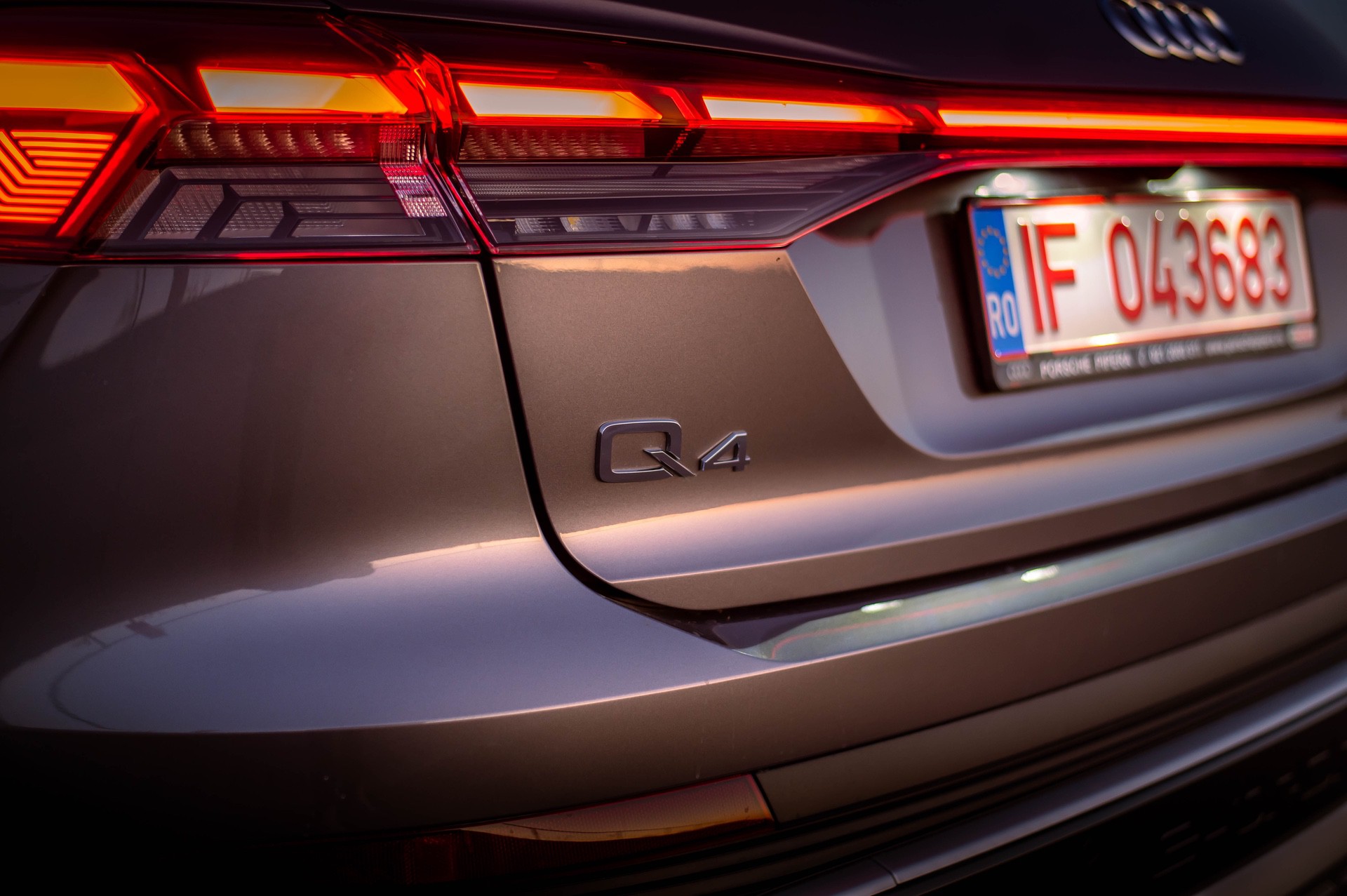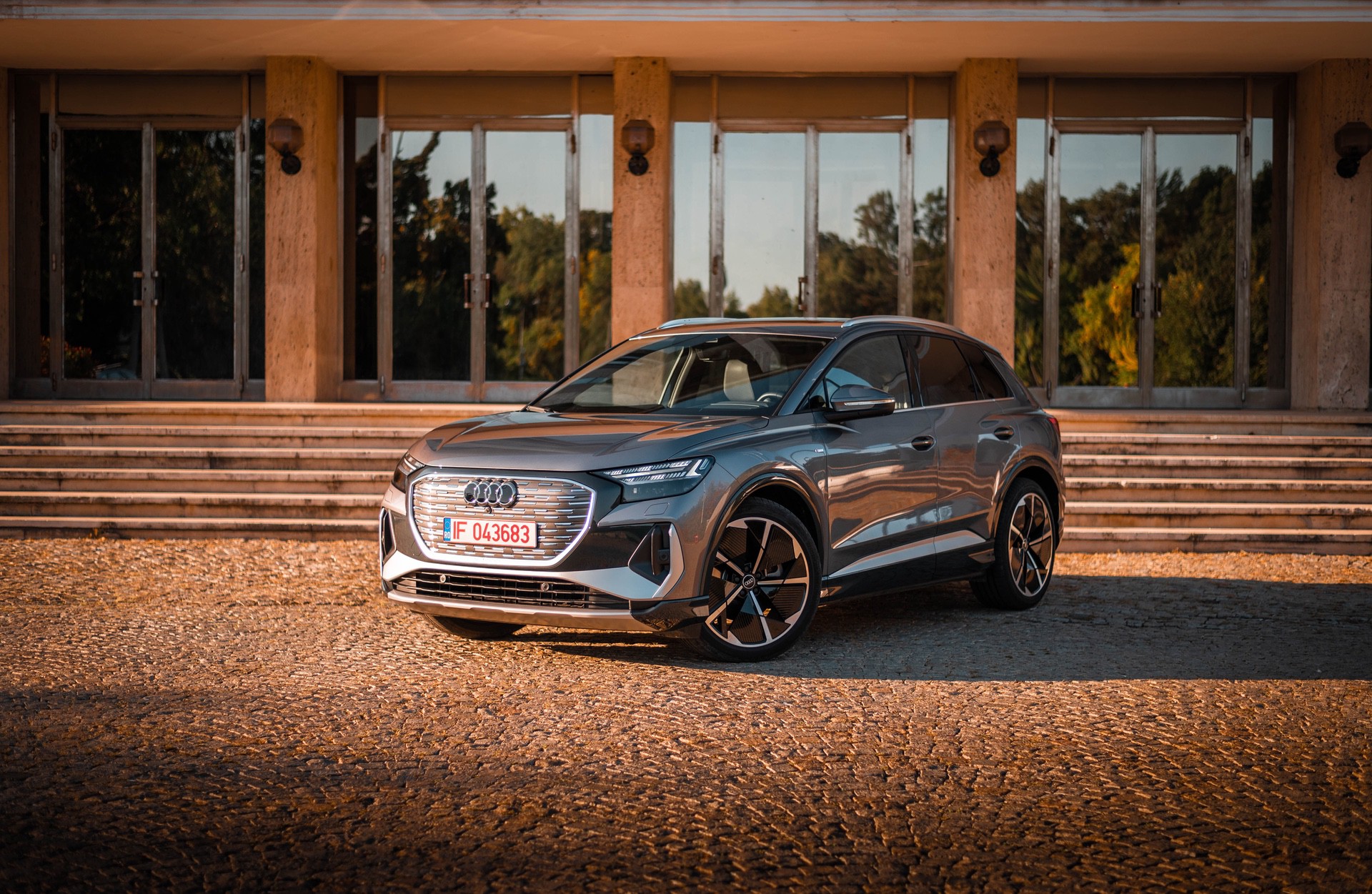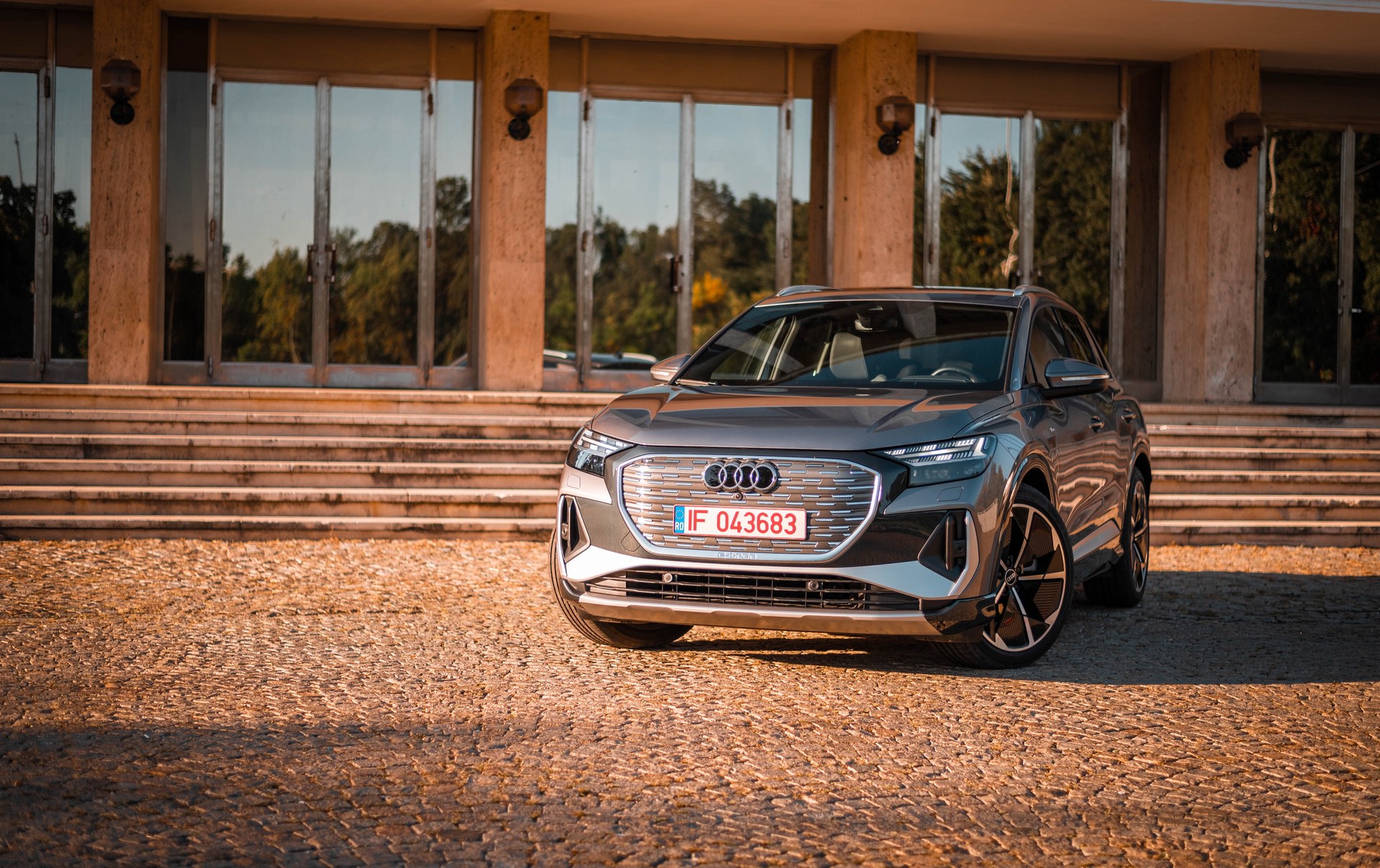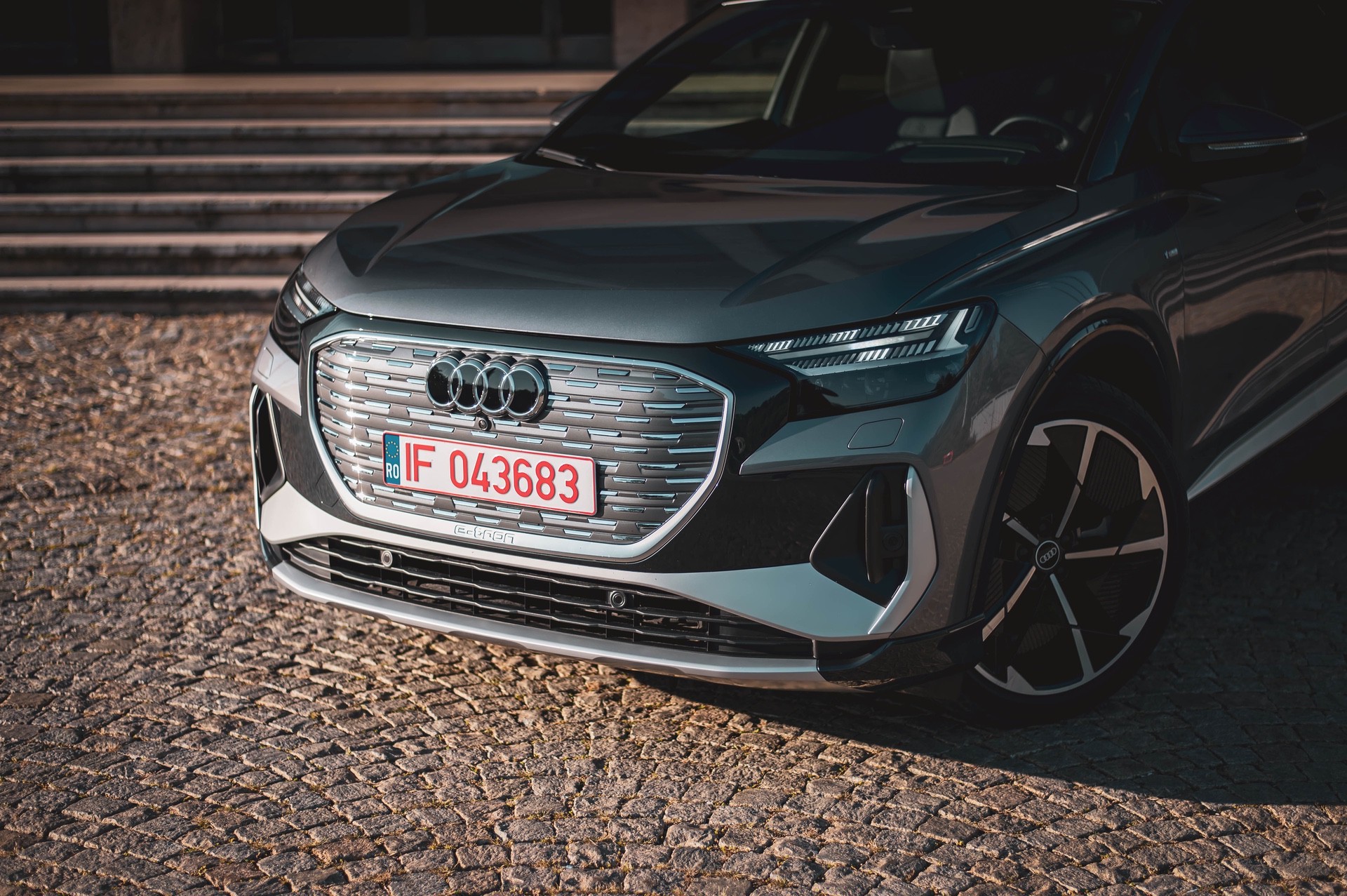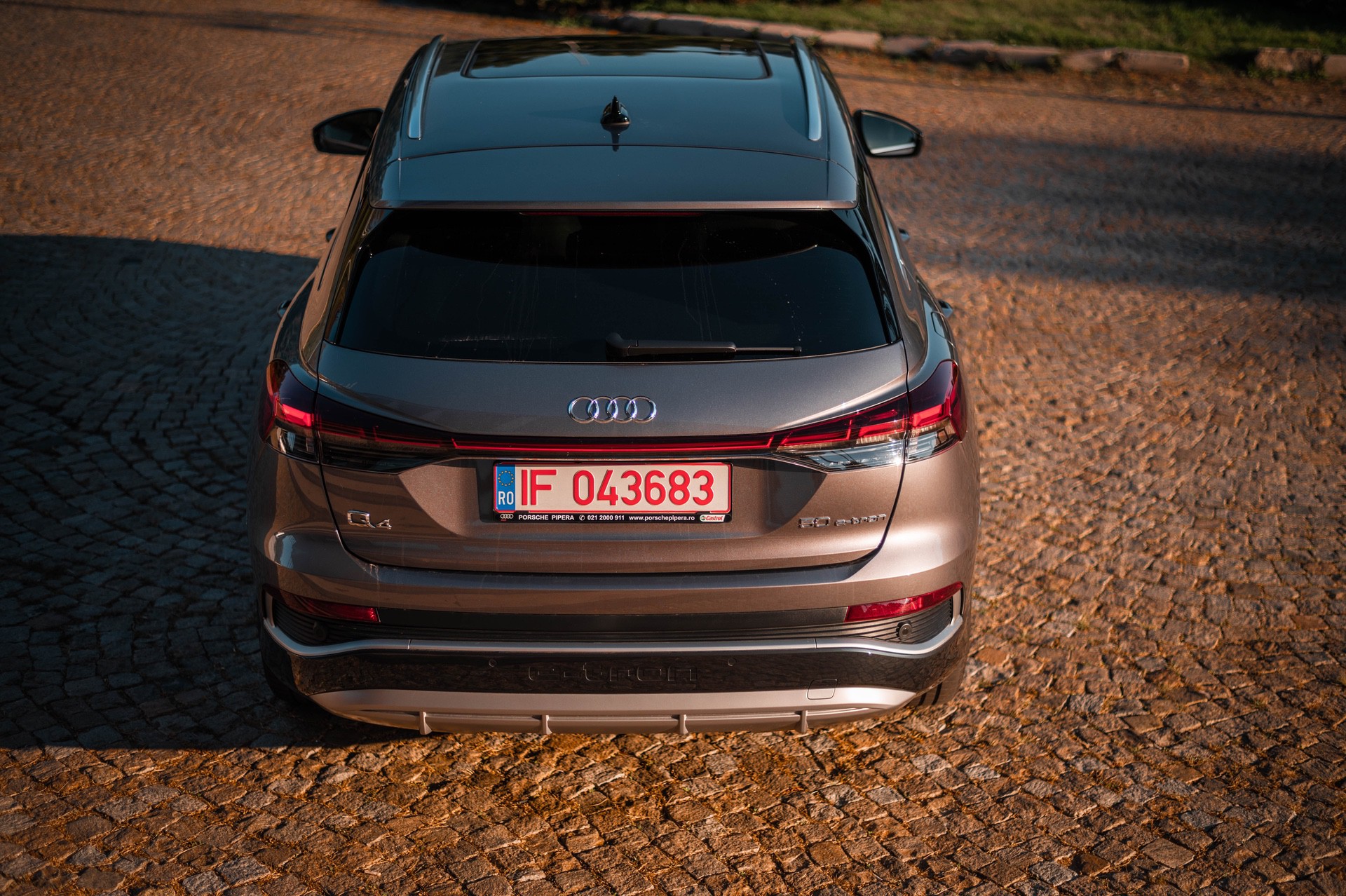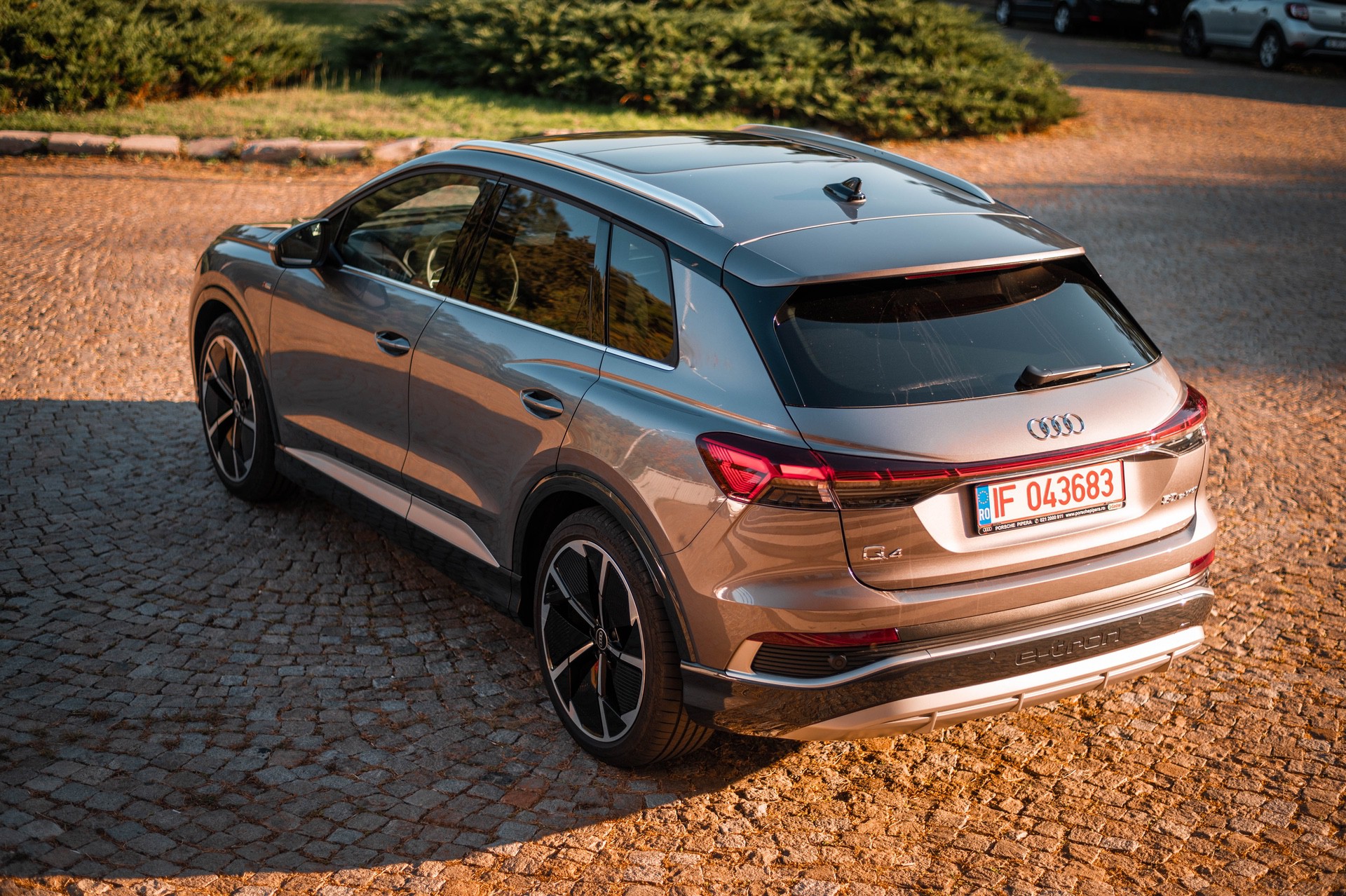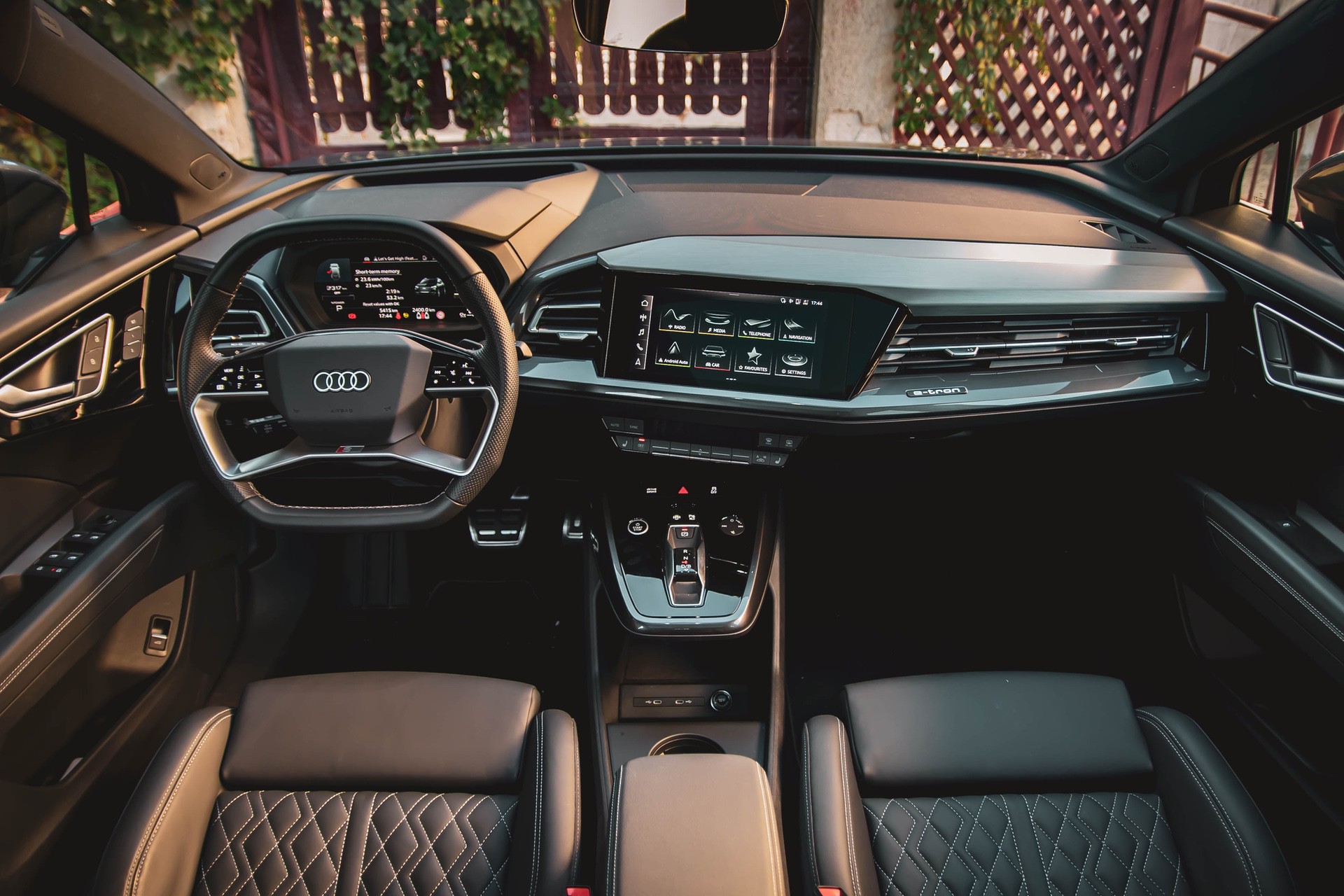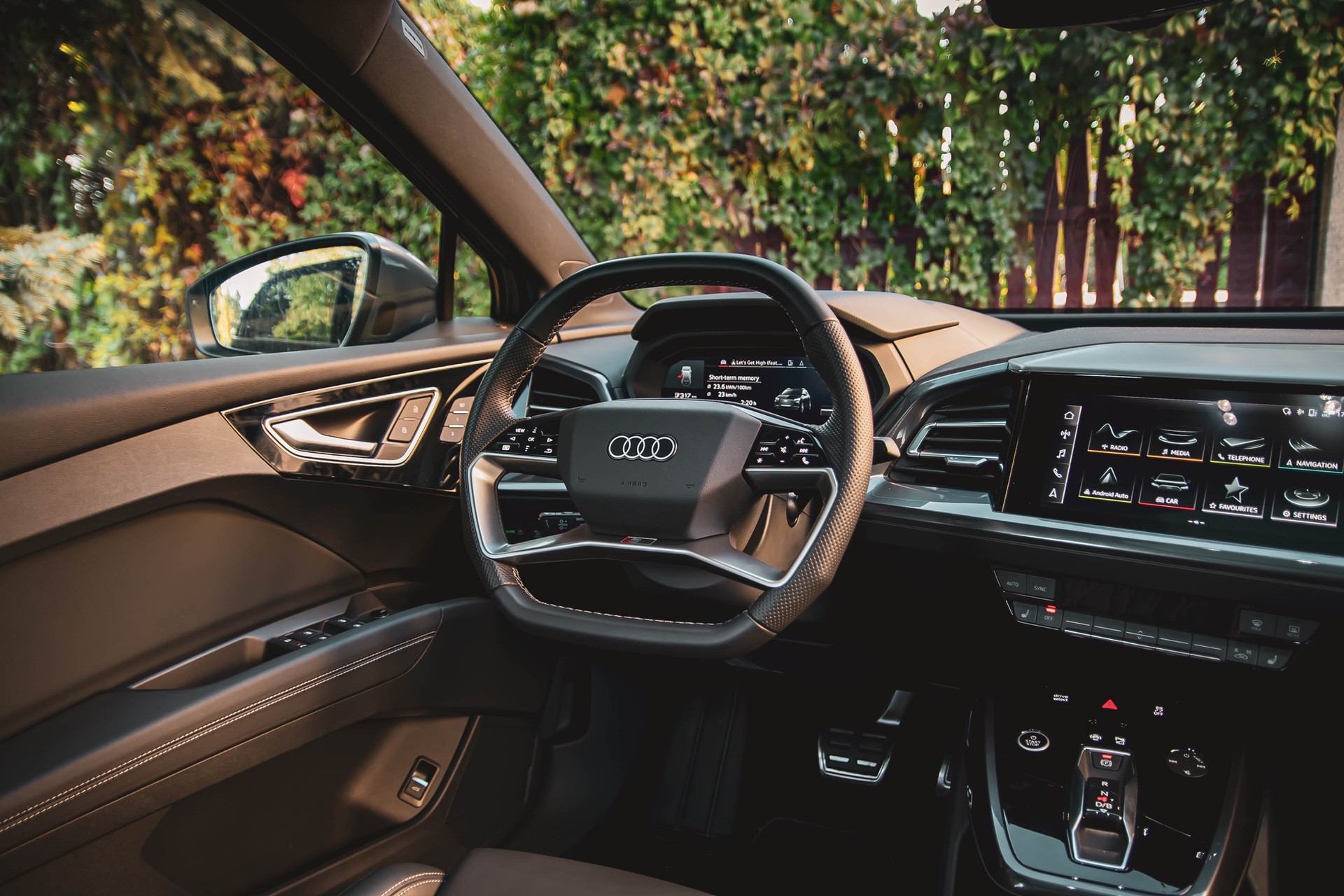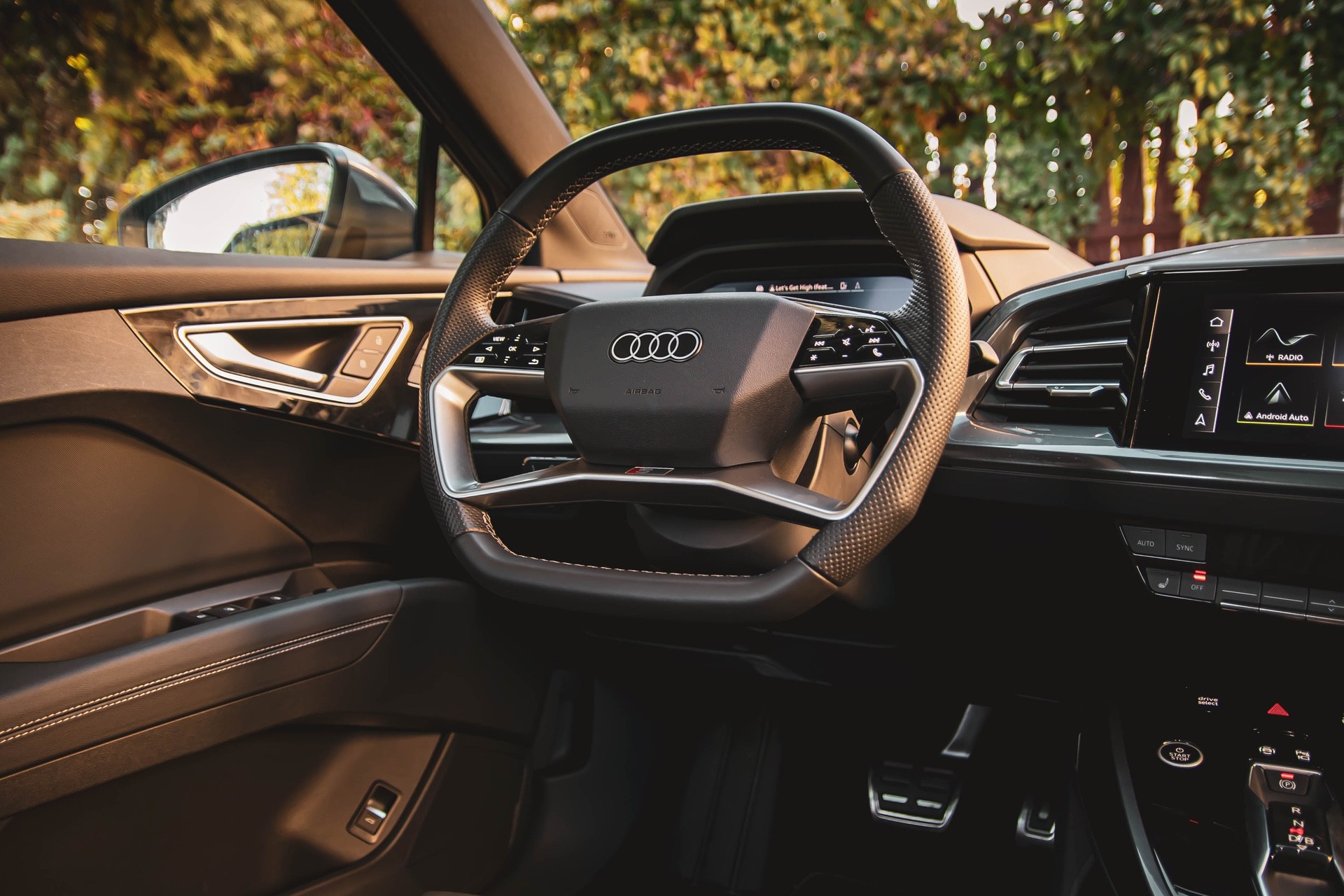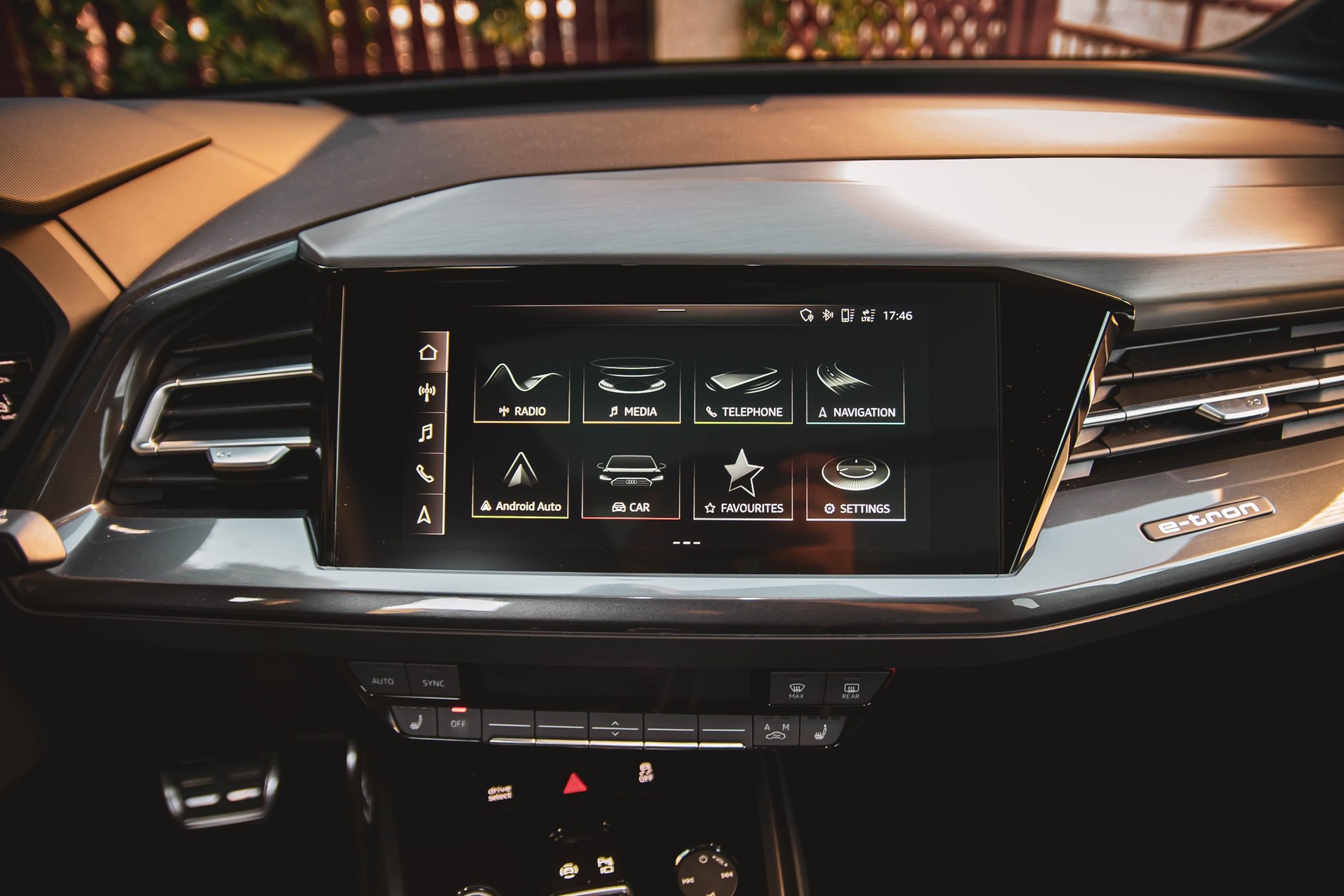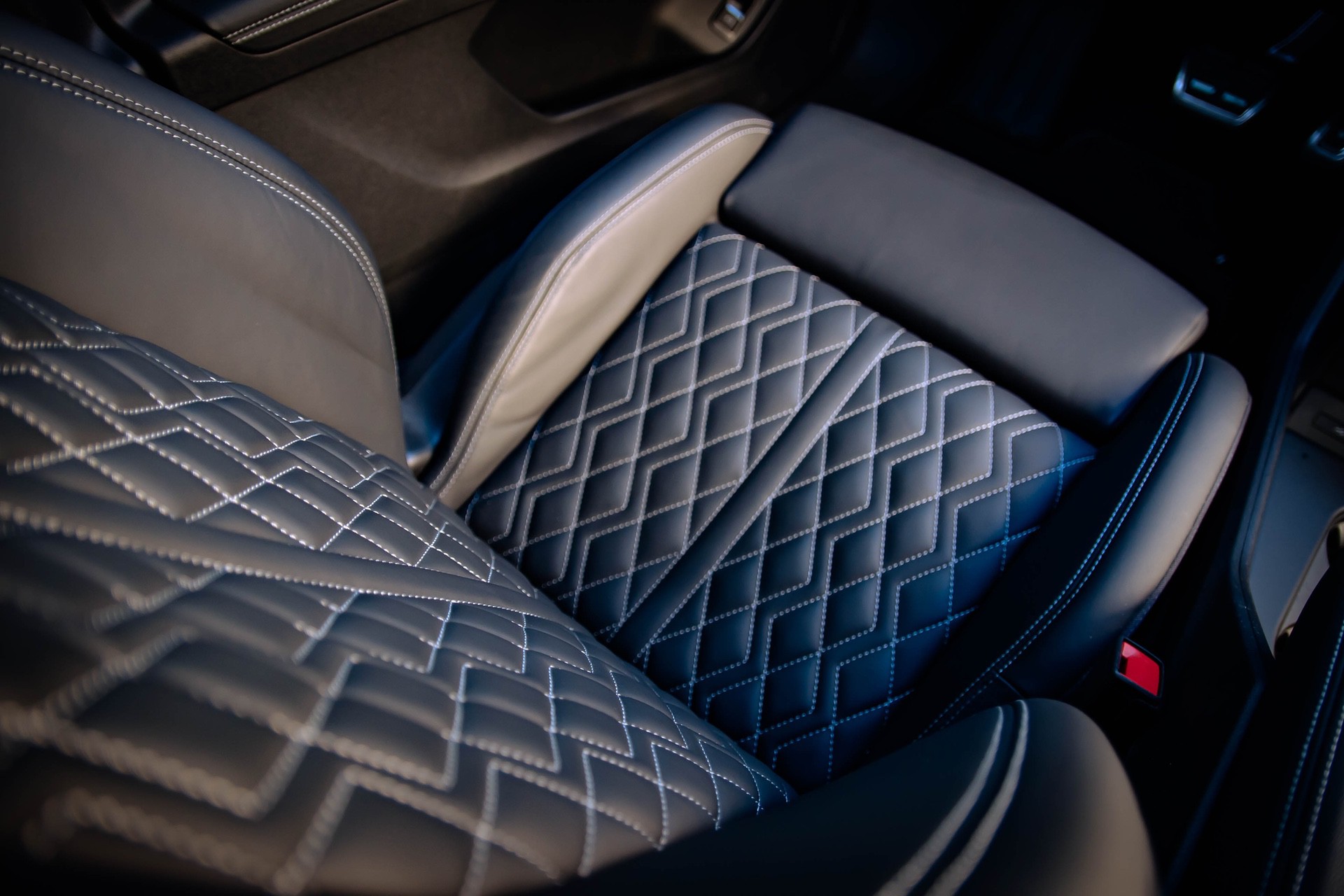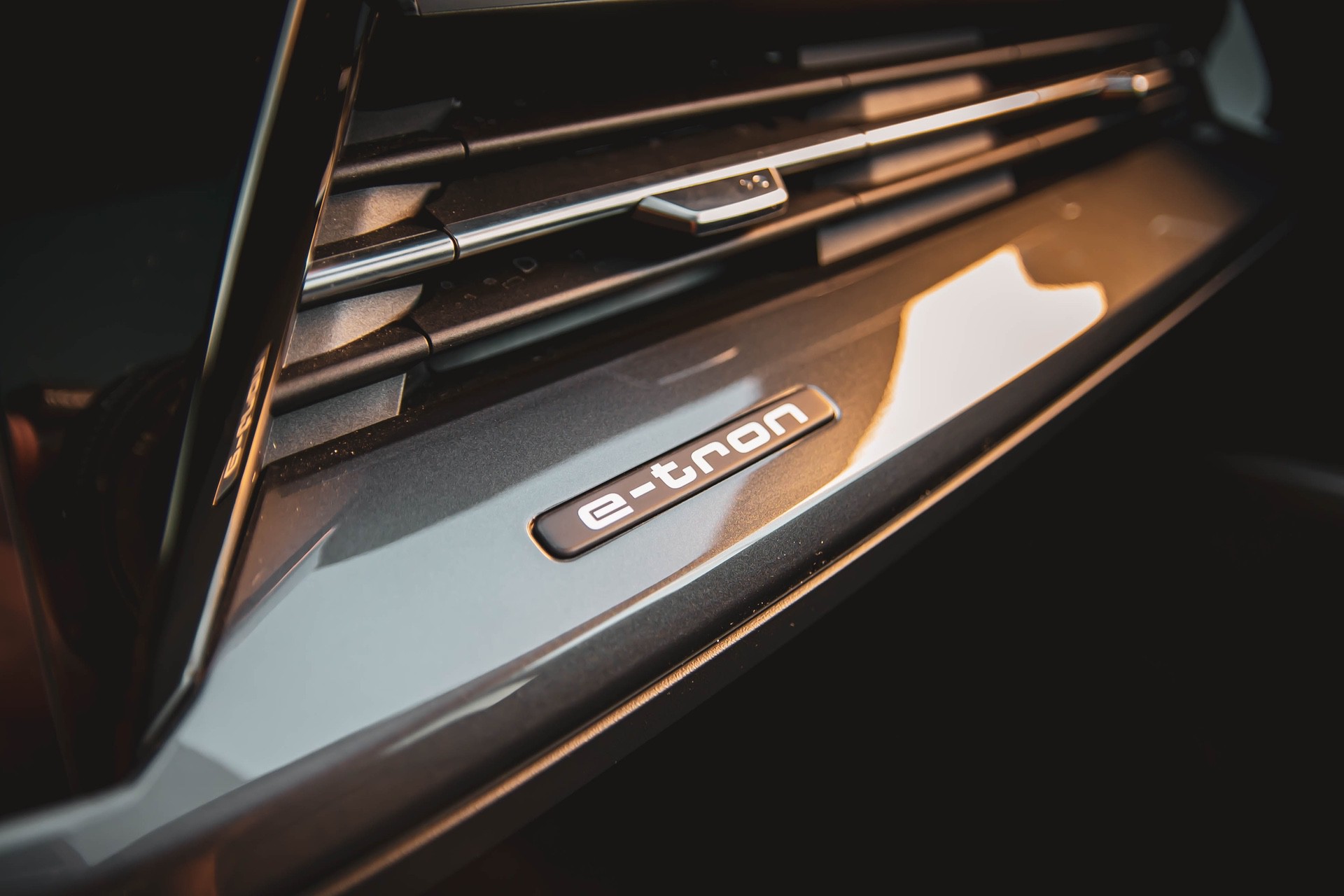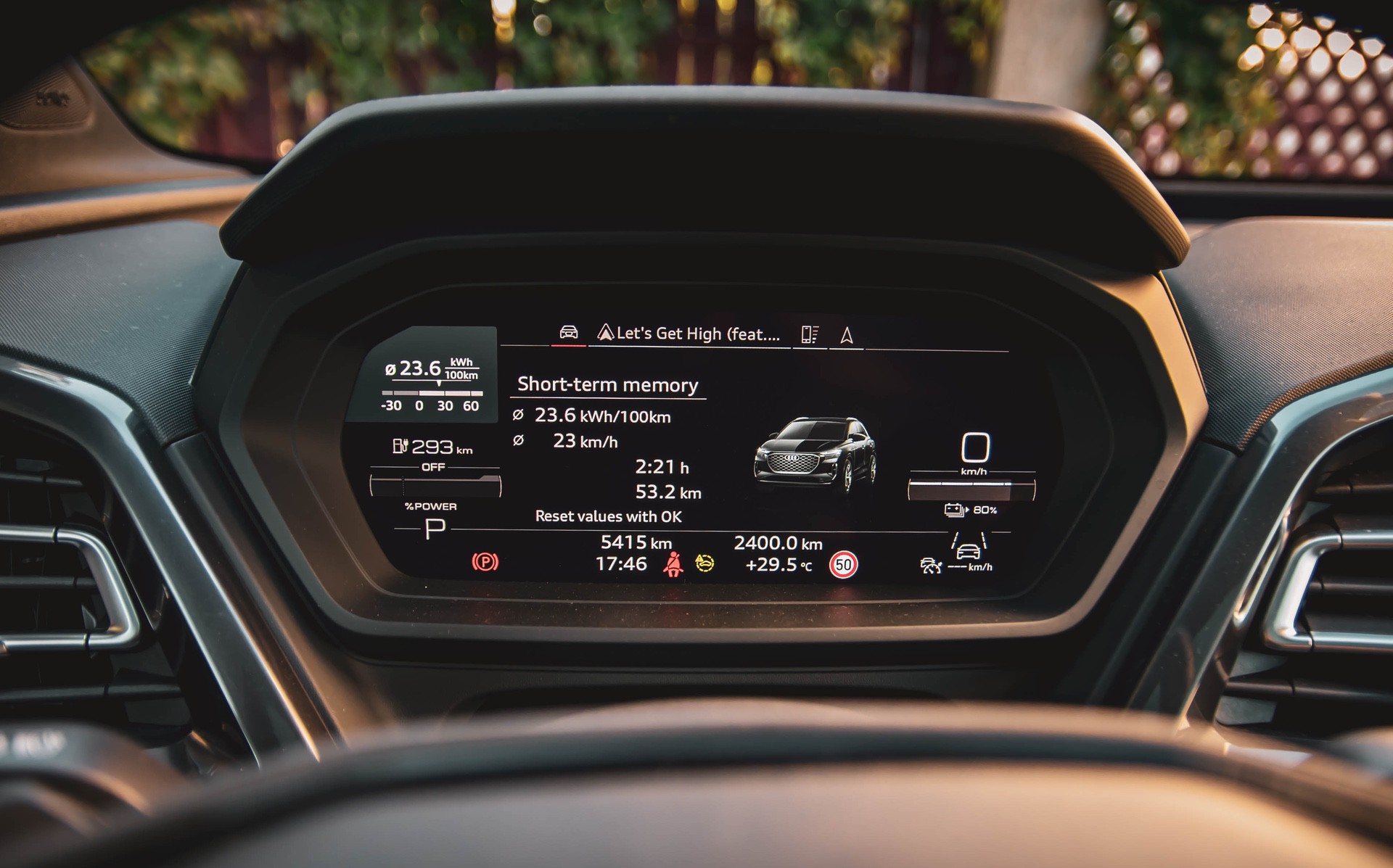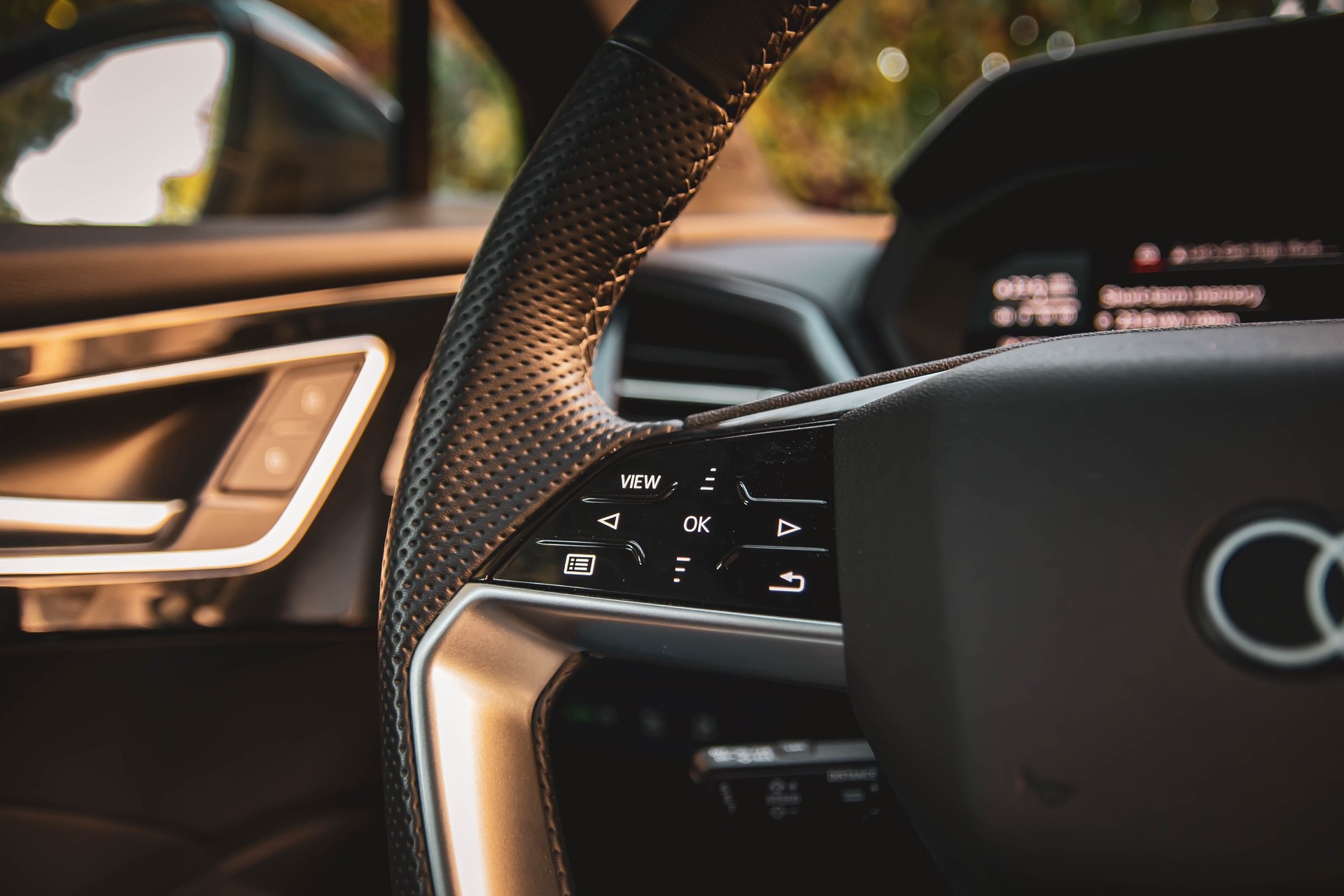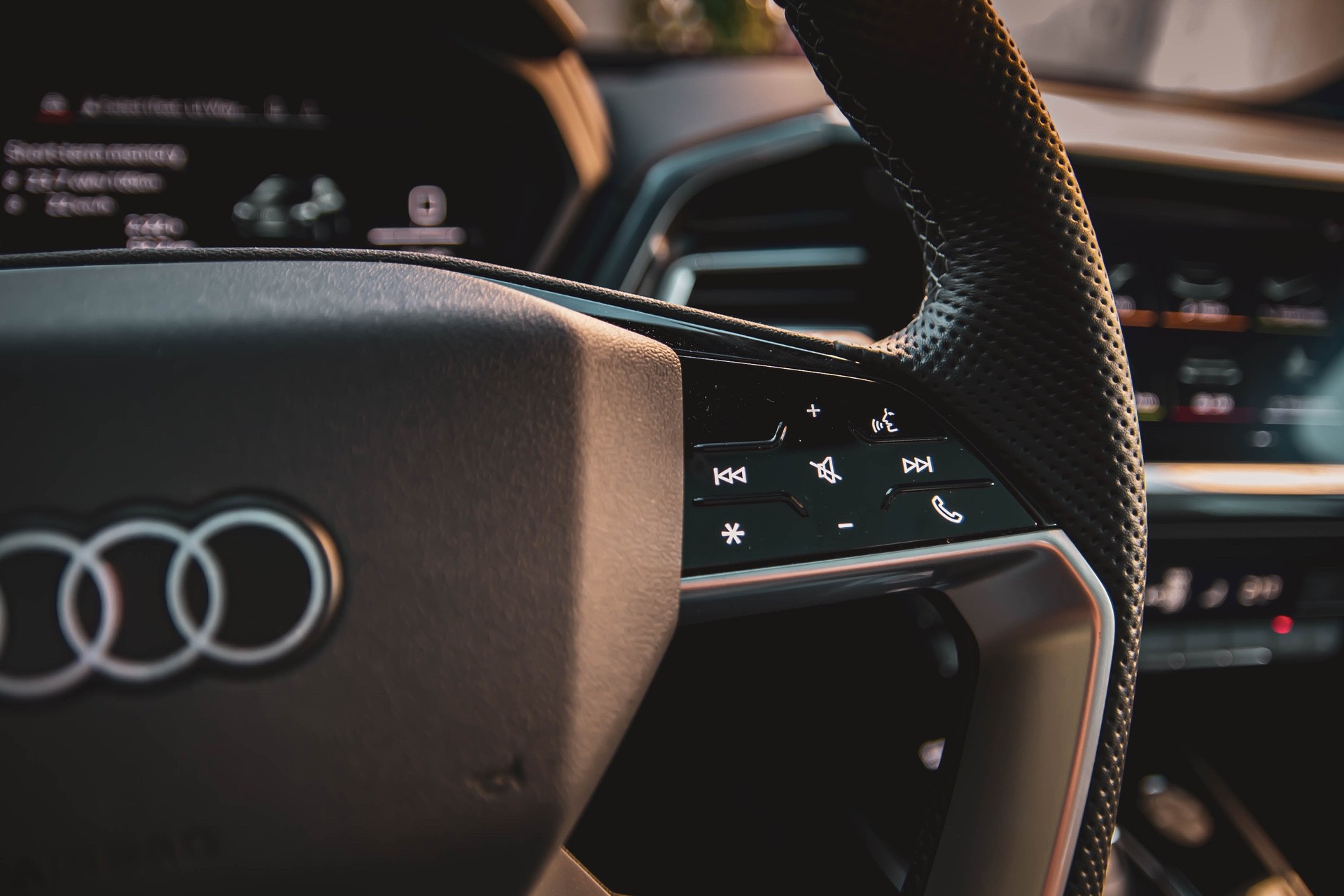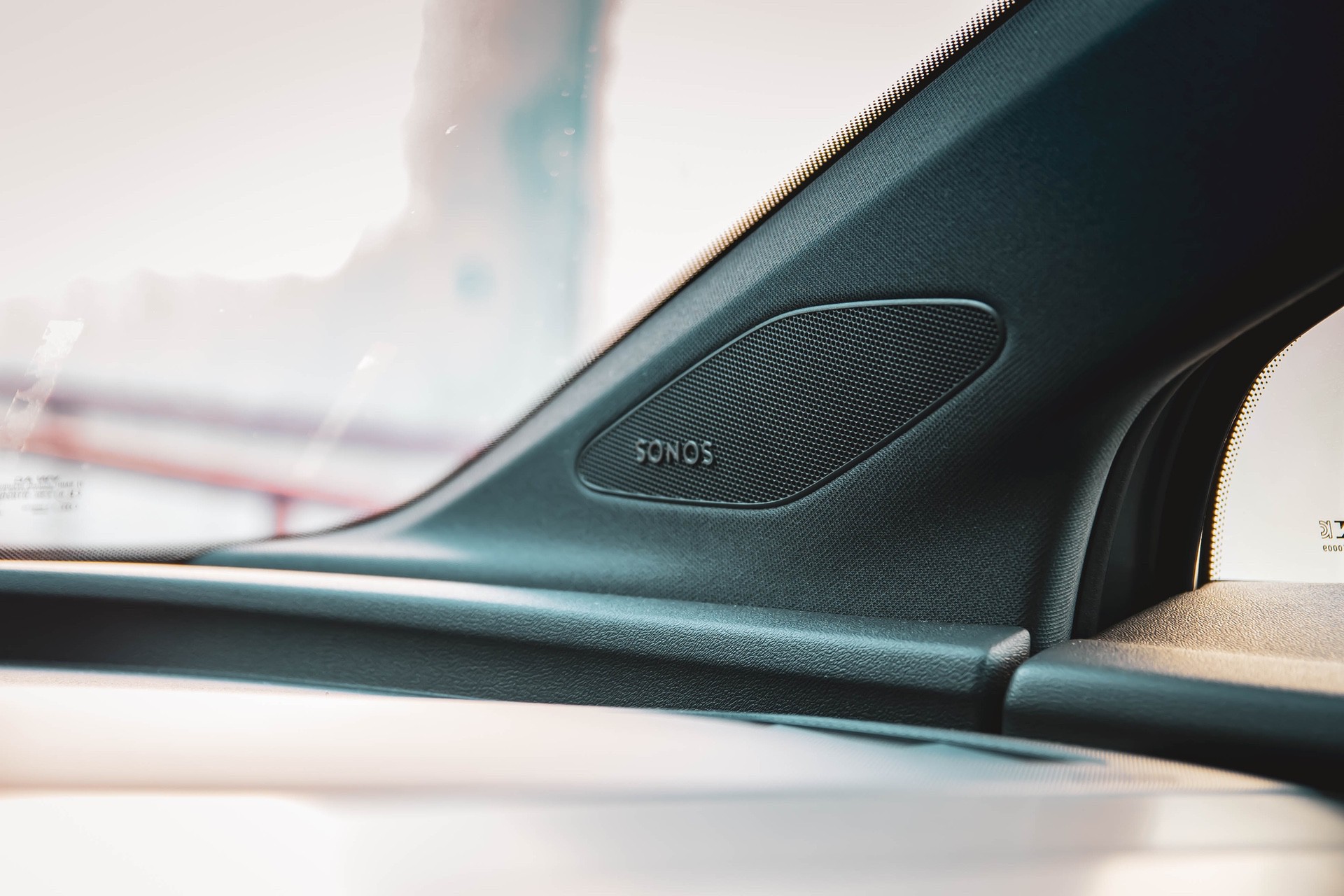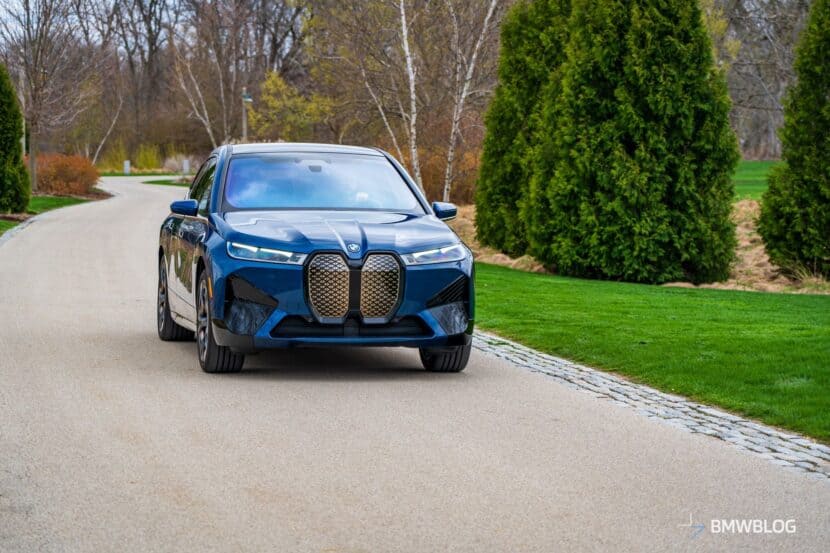The automotive industry is changing at a faster pace than ever these days and every car maker needs to adapt to their customers’ requirements or needs. Of course, some automakers continue to mix both internal combustion engines and electric cars on the same platform, while others have decided that a dedicated EV platform is the right move forward. Currently, that seems to be the dominant idea in the industry. It is in these moments that executives in high chairs over in Ingolstadt are more than happy to be part of the VAG group.
Built On The MEB Platform
That’s because the Volskwagen group invested no less than $48 billion in their MEB modular electric platform. The architecture is the base for almost all electric cars coming out from Audi, Skoda, Seat, Volkswagen. And even some Porsche products in the future will use the platform.
Audi, naturally, is taking full advantage of this dedicated and shared platform. The Q4 e-tron is built on the MEB platform and arrives to market as an alternative in a still growing segment. Even though it might seem late to the party, the Q4 e-tron marks a couple of very interesting premieres.
For example, in the low-spec versions, it becomes the first ever Audi volume-selling rear-drive car ever to hit showrooms. A rear-wheel drive Audi? Yes, that’s one of the many perks such modular platforms allow for these days. You’re no longer forced to adopt a certain positioning for the motor or the driving axle. Sure, there was the Audi R8 too, but that was only offered as a rear-wheel drive model in special versions and as never offered as standard in such a configuration.
The Design
In the case of the Audi Q4 e-tron, the front end is still dominated by the Singleframe ‘grille’. The only difference compared to other Audi models is that the Singleframe on this car is completely blocked out to improve the aerodynamics of the car. Our model also came equipped with the S-Line package which brought forward some fake intakes on the sides.
Another EV-specific design item is the shorted hood. You no longer need a long hood to house a massive V12 under it, so car makers are expanding the interiors of these cars as the platform underneath allows it. This way, the hoods are now tiny by comparison and it shows when you look at the Q4 from the side. Its profile seems a bit bulky but it’s all done with a clear purpose: to make an efficient and spacious car.
Also up front you’ll notice the new headlights which feature a world first as well. On the Q4 e-tron you can adjust the Daytime Running Light design using the on-board infotainment system. You can choose from four different designs and it’s a pretty cool trick. After all, Audi knows a lot about design and lights so why shouldn’t it tap into that knowledge to get an upper hand on the competition?
The rear-end also features clean cut surfaces and a rather monobloc design. The lights do a little dance whenever you lock and unlock the car and look pretty awesome while at it. One interesting detail I noticed at the back though was that the quattro badge was missing, even though our particular tester was an all-wheel drive model. Instead, there’s a huge e-tron badge marked out in the rear bumper that you can’t miss.
A Familiar Interior
It’s business as usual inside the cabin of the Audi Q4 e-tron. Tut there are some caveats. The overall design feels familiar in every way, with a single exception: the center console. On the Q4 you have a floating center console at the bottom of the dash where you’ll find the gear selector and some other controls, all sitting in the middle of a sea of piano black. Right above it you’ll find a simple HVAC panel, with old-fashion buttons (Thank God!). Going further up, you’ll find a 10.1” display that’s optional and features the familiar MMI interface. On the Q4 you can use Android Auto and Apple CarPlay wirelessly.
The instrument cluster is, of course, the Audi Virtual Cockpit we’ve all grown used to by now, with very little changes compared to what you’ll find on other Audi models. Most differences will be related to the units used (as this is an electric car) and the display of the battery state of charge. There’s no rev counter, just a power indicator.
Then there’s the steering wheel. With a flat top and a flat bottom, it doesn’t resemble a ‘wheel’ anymore but it’s closer to hexagon in shape. That doesn’t take away any of the functionality though, as other new proposals in the industry do. It looks awesome and works great, being on the thinner side of things but wrapped in perforated leather.
One issue I had with the steering wheel though was the introduction of touch-sensitive buttons on it. It’s something we’ve seen on other MEB products as well, such as the VW iD.4 or the iD.3 and I haven’t been a fan of this approach ever since I saw it on the Mercedes-Benz E-Class. The buttons are difficult to use by just touching them as the inputs are seldom accurate. Furthermore, you end up touching them by accident and triggering all sorts of functions. Not once did I end up calling someone by accident because of those pesky touch-sensitive surfaces.
Another issue I noticed was the quality of the plastics in certain places. The dashboard and the top of the door panels are covered in soft-touch plastic which is decent for the price range. Our car was also wearing an optional package that turned the seats into comfortable armchairs, wrapped in Nappa leather, with quilted stitching. However, the lower part of the door panels, and the entire rear door panels could’ve used a bit more quality.
Even so, it’s quite possible to get distracted by the huge, and optional, panoramic sunroof which brings a certain feeling of space inside. And there’s plenty of space, too. The MEB platform allows the engineers to position the electric motors towards the extremities of the car. This way, the interior space is greatly amplified since you don’t have a transmission tunnel.
The Fastest Q4 e-tron
The Audi Q4 e-tron 50 quattro is the most powerful and fastest e-tron Q4 you can buy today. It uses two electric motors, one for each axle, which, together, can deliver up to 299 PS and 460 Nm of torque. Mind you, most of the time, the car will be running in rear-wheel drive mode, meaning only the rear axle motor will be used, in order to save some energy in the process. Switch into Dynamic mode and both motors kick in for the best performance possible.
Battery Capacity And Charging
Hidden inside the floor you’ll find a huge battery that comes in two flavors. The entry level one is rated at 52 kWh of usable capacity and the larger one has a total usable capacity of 76.6 kWh. The latter was the one we had for testing purposes and it proved to be quite enough for most scenarios.
Around town, the average energy consumption recorded was 18.1 kWh/100 km covered which means, if you do the math, you could drive up to 423 kilometers on a single charge. Outside the city limits, on the highway, at an average speed of 130 km/h that energy consumption went up to 24 kWh/100 km, adding up to a range of about 320 km.
On a set of b-roads, with an average speed of 73 km/h, the Q4 showed a consumption of 15.6 kWh/100 km, adding up to a potential total range of 491 km. Mind you, all these results were achieved without cutting down on any comfort creatures and without using eco mode or anything along those lines. The car was in Comfort mode all the time and the AC was working, because the exterior temperature was, on average, 20 degrees Celsius.
Another important question possible EV adopters might have revolves around the charging time, which is known to be a bit of an Achilles’ heel. All Q4 models come with 125 kW charging capabilities which is good enough for most situations. Provided you find a charger that can deliver that much power, you should be able to charge your car from 10 to 80 percent in about 40 minutes which is more than decent.
Testing out the charging capabilities, I only found a 75 kW charger nearby which managed to deliver some 37h kW to the battery in about 28 minutes. Think of it this way: with 37 kWh you could cover nearly 200 km inside the city or an additional 150 km on the highway.
As for how those miles would be covered, it would depend on a number of factors. Our tester was fitted with the S-Line package, the sport suspension, sport steering and a number of other add-ons that were meant to improve the car’s handling when driven in a sporty fashion. We didn’t have the adaptive suspension though, which might’ve made things even better.
The Driving Experience
Either way, the Q4 e-tron 50 Quattro behaved much like an Audi, albeit a rear-wheel drive one. The suspension was incredibly comfortable in almost every given situation, with small bumps being barely noticeable. Not even bigger potholes sent a lot of jolts or a big thud into the cabin, despite riding on 21” wheels. The atmosphere was serene inside the Q4 most of the time.
Switch into Dynamic mode and the first thing you’re going to notice is the sound. The Q4 e-tron emits a special sound through the speakers that grows louder with the speed, as a way to offer feedback to the man behind the wheel. It’s hard to describe it but it does resemble the sound spaceships used to make in Sci-Fi movies.
It helps keep you keep that speed in check because despite its hefty weight, the Q4 e-tron can pile on speed at a rapid pace. And since we had double-glazed windows on our car, there’s little noise to tell you just how fast you’re going, at least in a straight line.
Arriving at a set of curvy roads, if you try to maintain the speed through the corners, you’ll instantly get audio feedback from the tires. The grip is decent but the 2.3-ton car is still heavy and the laws of physics still apply. You’ll feel the underpinnings of the car pushing toward the outside of the corner even though there isn’t a lot of lean to talk about overall.
Conclusion
Despite its 299 HP, I had the feeling the Q4 e-tron 50 wasn’t designed to carve canyon roads. Instead, the new electric SUV from Audi was created to offer an alternative to the rivals on the market today. That means the Audi Q4 e-tron will most likely be used around town for shopping and school runs. For those purposes, considering the range we got out of it, the Q4 e-tron will be perfect. Ask for it to be a sports car (which it is definitely not) and it will fall short.
Keep your expectations in check and you won’t be disappointed.


